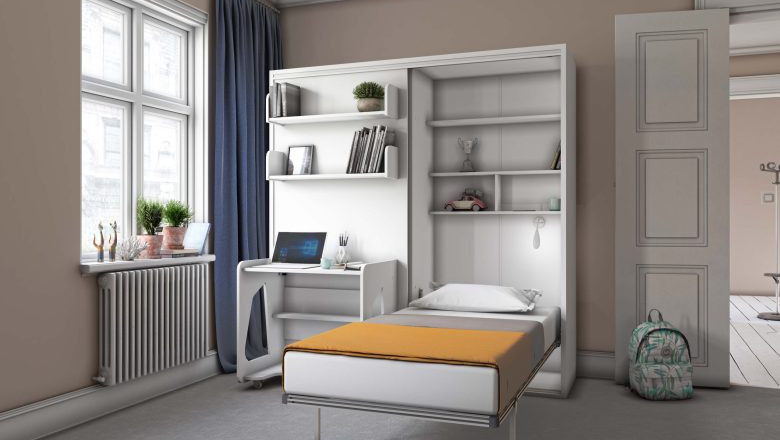views
The smart furniture market is rapidly evolving, and at the heart of this transformation lies the Internet of Things (IoT). As more devices and systems become interconnected through digital networks, furniture is no longer just functional—it’s becoming intelligent, adaptive, and deeply integrated into the smart home and office ecosystems. The convergence of furniture design and IoT technology is not only reshaping how we interact with our spaces but also setting the stage for the future of connected living.
The Role of IoT in Smart Furniture
The Internet of Things refers to the network of physical objects embedded with sensors, software, and other technologies to exchange data with other devices and systems over the internet. In smart furniture, IoT integration enables real-time data exchange, automation, and user-centric experiences.
IoT allows furniture to:
-
Communicate with other smart devices
-
Monitor user activity and preferences
-
Adjust settings automatically
-
Enhance convenience, safety, and efficiency
This integration turns everyday furniture—such as desks, chairs, beds, and tables—into dynamic interfaces that interact with users and environments intelligently.
How IoT is Transforming Smart Furniture
-
Personalization and Automation
IoT-enabled smart furniture can learn and adapt to user preferences. A connected bed may adjust firmness based on sleep data, while a smart desk can change height automatically according to the time of day and user posture patterns. -
Remote and Voice Control
Through IoT, users can control furniture via mobile apps, voice assistants, or centralized home automation platforms. For instance, a smart recliner can be programmed to adjust at a specific time, or a smart coffee table can be voice-activated to turn on ambient lighting. -
Health and Wellness Monitoring
IoT sensors embedded in chairs and beds track posture, heart rate, and sleep quality, providing valuable insights for users to improve their wellness. In healthcare-focused settings, this data can be transmitted to caregivers or doctors for remote monitoring. -
Energy Efficiency and Sustainability
Smart furniture integrated with IoT can detect usage patterns and manage energy accordingly. For example, a smart desk lamp can dim when natural light is sufficient, or a sofa's heating element can switch off when not in use—contributing to a more sustainable living environment. -
Security and Safety Features
Furniture equipped with motion sensors, smart locks, or alert systems adds a layer of security. For instance, a smart cabinet might send notifications if accessed without authorization, or a child’s bed could include fall detection and alert mechanisms.
Applications Across Residential and Commercial Spaces
-
Homes: Smart beds, connected sofas, intelligent lighting furniture, and kitchen tables with touch-screen interfaces are making homes more responsive and adaptive.
-
Offices: IoT-driven desks and chairs that monitor productivity, ergonomics, and energy usage are redefining the modern workspace.
-
Hospitality: Hotels are integrating smart furniture to enhance guest comfort—such as beds that adjust for optimal sleep or desks that sync with guests’ digital preferences.
-
Healthcare: Medical recliners and smart hospital beds with IoT capabilities improve patient care through real-time monitoring and remote management.
Market Growth and Future Outlook
The integration of IoT is a key driver behind the exponential growth of the smart furniture market. Forecasts suggest that as the IoT ecosystem matures, smart furniture adoption will become a standard in both new constructions and home renovations. The market is expected to witness a CAGR of over 20% from 2025 to 2030, with IoT playing a central role in this expansion.
The increasing proliferation of smart devices, 5G networks, and AI-powered systems will further enhance the functionality of IoT-integrated furniture. In the future, we may see:
-
Cloud-connected furniture for predictive maintenance and updates
-
AI-enhanced behavior modeling for ultra-personalized experiences
-
Smart city integration, where public furniture communicates with municipal infrastructure
Challenges and Considerations
Despite its potential, IoT integration in furniture comes with challenges:
-
Data privacy and cybersecurity are major concerns as more personal data is collected.
-
Standardization across IoT platforms remains an issue, leading to compatibility challenges.
-
High costs and limited consumer awareness may slow adoption in emerging markets.
To overcome these barriers, collaboration between tech companies, designers, and manufacturers is crucial.
Conclusion
The fusion of IoT and smart furniture is unlocking a new era of intelligent living. From health monitoring and energy management to seamless integration and personalization, IoT is at the core of making furniture more functional, interactive, and impactful.






















Comments
0 comment